Ham Glaze Recipe With Maple Syrup and Dijon Mustard
This Ham Glaze Recipe with brown sugar and Dijon mustard is absolutely delicious. Whether you are baking a ham for Sunday dinner or a holiday meal, this easy-to-make glaze really adds that next level of flavor you crave.
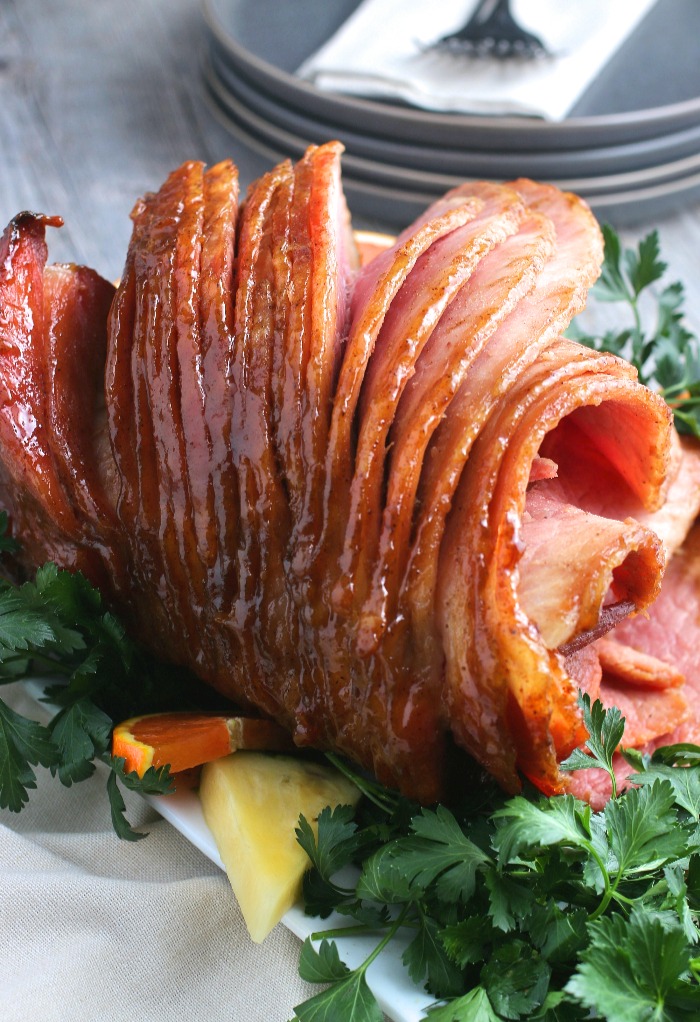
Ham Glaze Recipe
For years, I have popped a ham into the oven for holiday meals, and every time I’ve added some variation of a glaze.
While they’ve all been good, they just didn’t quite do what I was craving. That nice glazed look with both sweet and salty flavor is a well-known addition to your favorite ham.
This recipe, with just a few ingredients and simple changes, really amped up the flavor and overall cooking method I had used in the past.
I’ve fallen in love with this method, and will never cook a ham with any other glaze again.
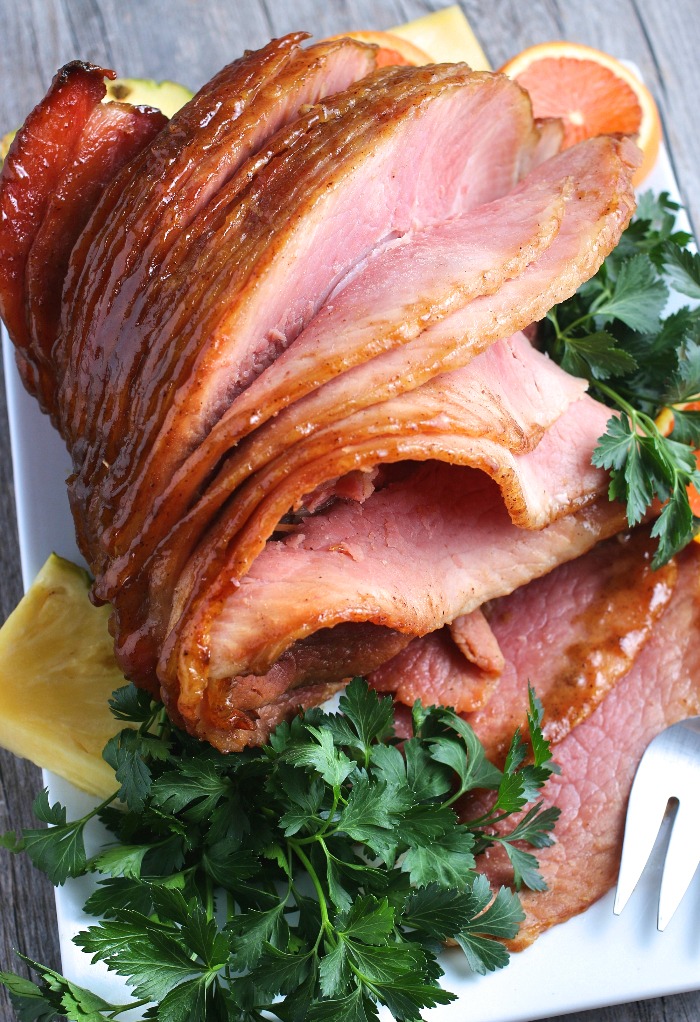
What Types of Hams Are There?
There are many types of ham to choose from, but a few basic types are common for making as a main dish for a meal. Below are some of the commonly found hams, and what makes each of them unique.
- Raw uncooked ham is typically the leg of the pig and is fairly uncommon when you consider a regular holiday ham purchase.
- A wet-cured ham is the most common we see in stores. This type of ham is the one you typically coat in a glaze such as this.
- The dry-cured ham is more commonly found cut into thin slices and called prosciutto. While it is still considered ham, it is not commonly used for this type of recipe.
Now that you know the basics of ham, let’s look at the type you find in stores that fall under the wet-cured ham category and work best with this easy ham glaze.
These three are the most common you find in grocery stores but are not the only options available.
- Spiral cut hams are typically wet cured and pre-cooked. The benefit of these is they are pre-cut making serving easier, but also allow you to add more glaze in between the cuts for more flavor on individual pieces.
- Ham steaks are a cross-cut of a ham that usually will still have the bone in the center. These are found in smaller portions and better suited to faster cook time and smaller crowd.
- Picnic hams although they are not technically a ham they are a cut of pork with a similar flavor. These are best suited for pulled pork versus a savory sliced ham.
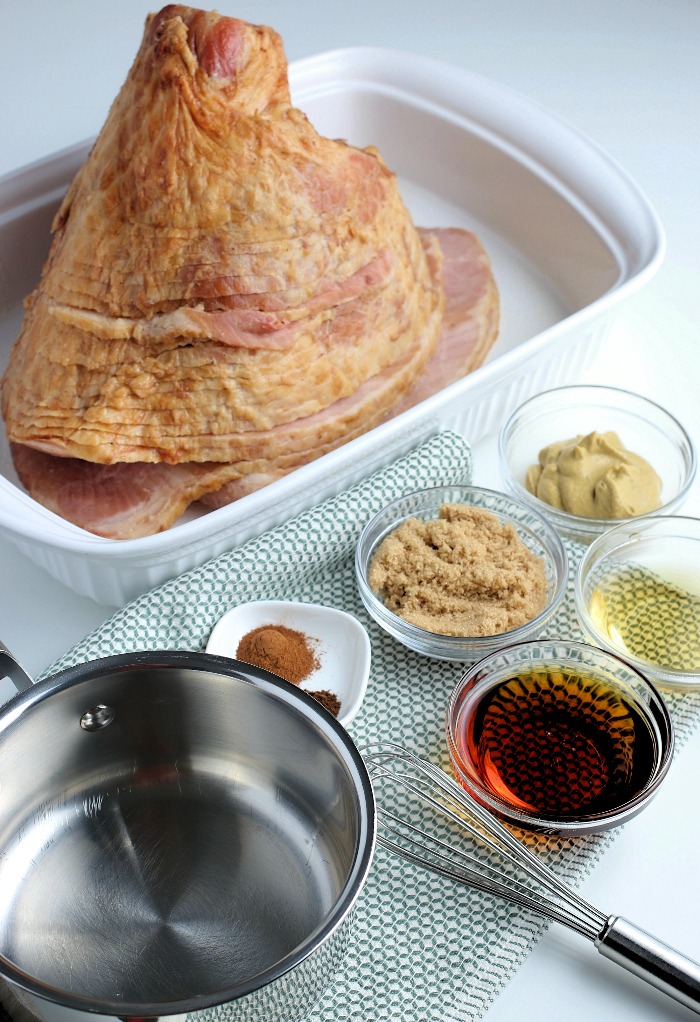
How Do I Cook a Precooked Ham with This Quick Ham Glaze?
A pre-cooked ham is easier and much faster to prepare. While it does not require cooking to eat, it is recommended for the best results.
Cook this for 10-18 minutes per pound, or until it reaches an internal temperature of 140°F.
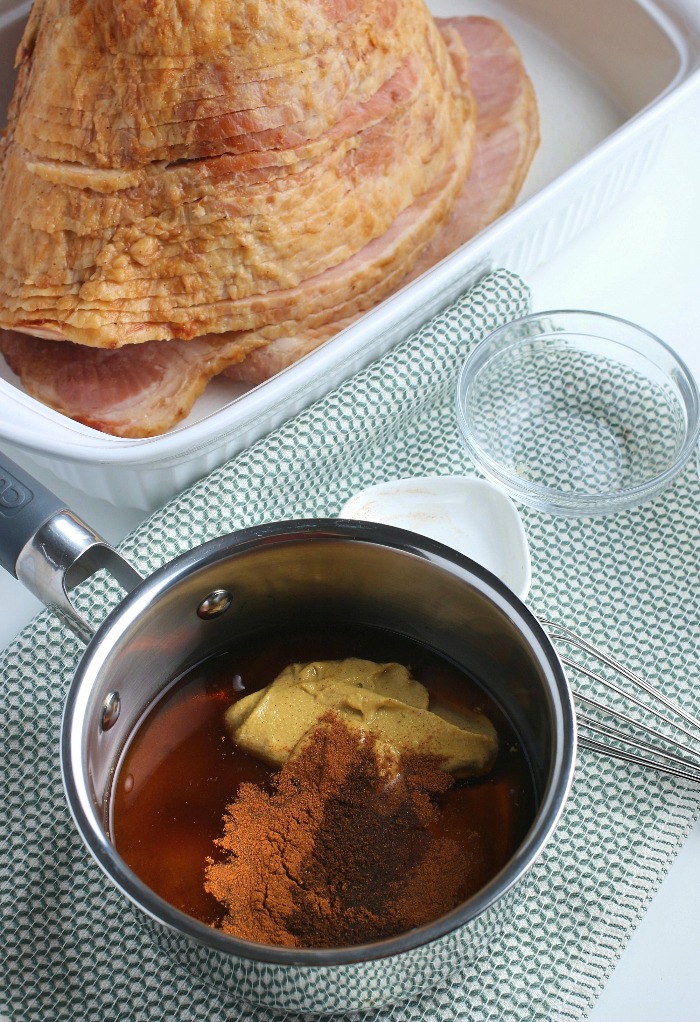
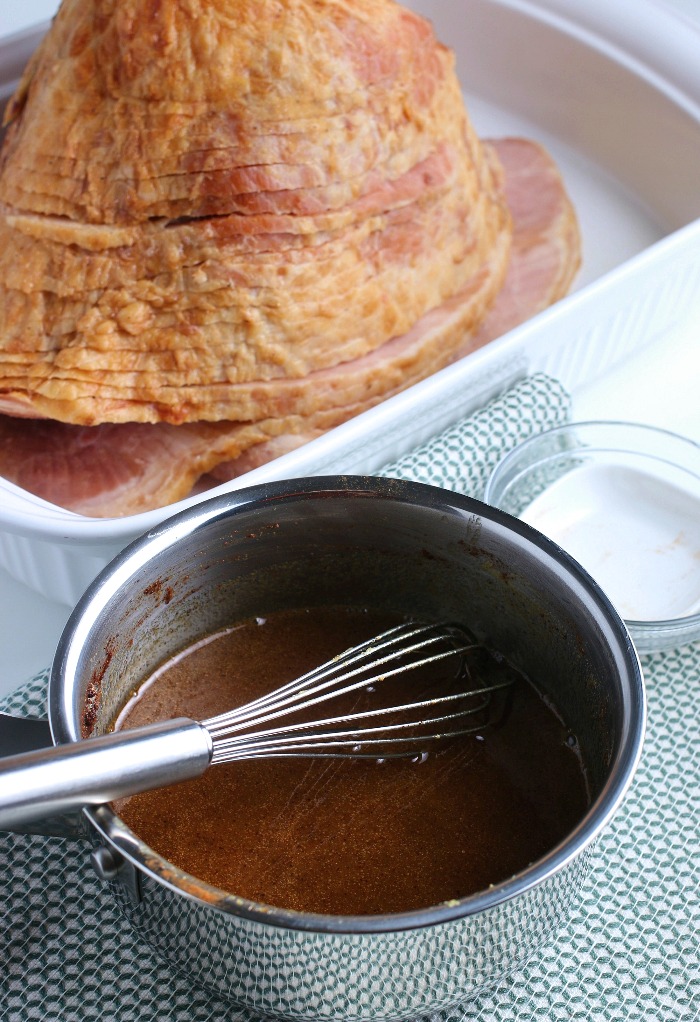
Do I Need to Cover the Ham When Baking With A Ham Glaze With Brown Sugar?
This is a personal preference, but also will depend upon how large your ham is and if it is uncooked or precooked.
For a precooked ham of average size, I would not cover the ham as it will be ready in a shorter amount of time.
If you are making an uncooked ham that will need hours to fully heat through, I recommend covering until the last hour of the cooking time.
This helps keep the glaze from burning and still allows the ham to cook thoroughly with the flavor you desire.
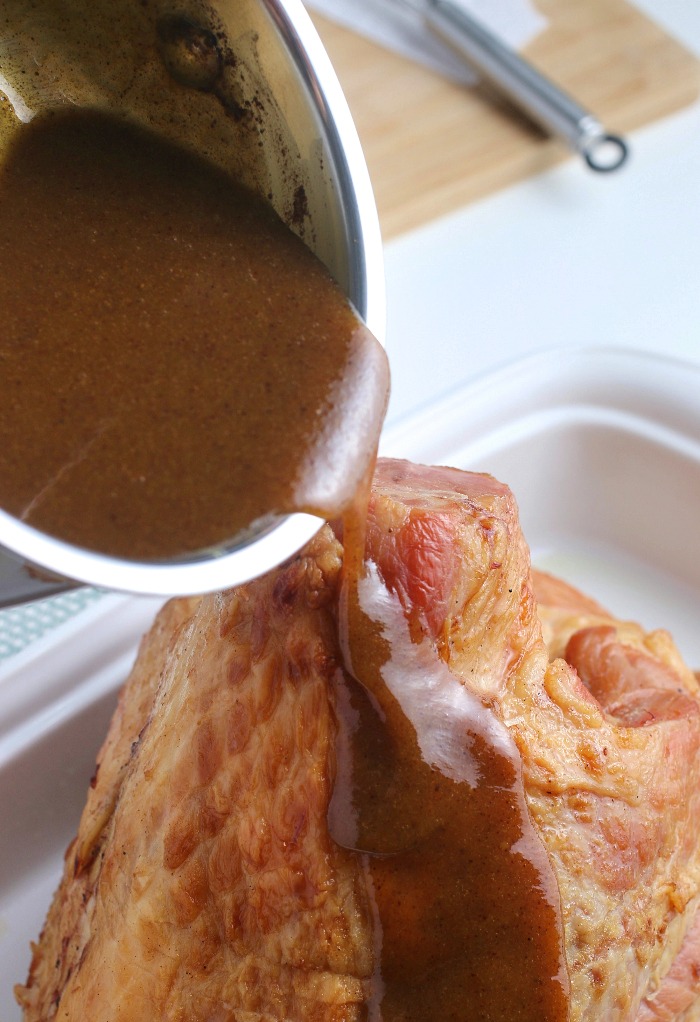
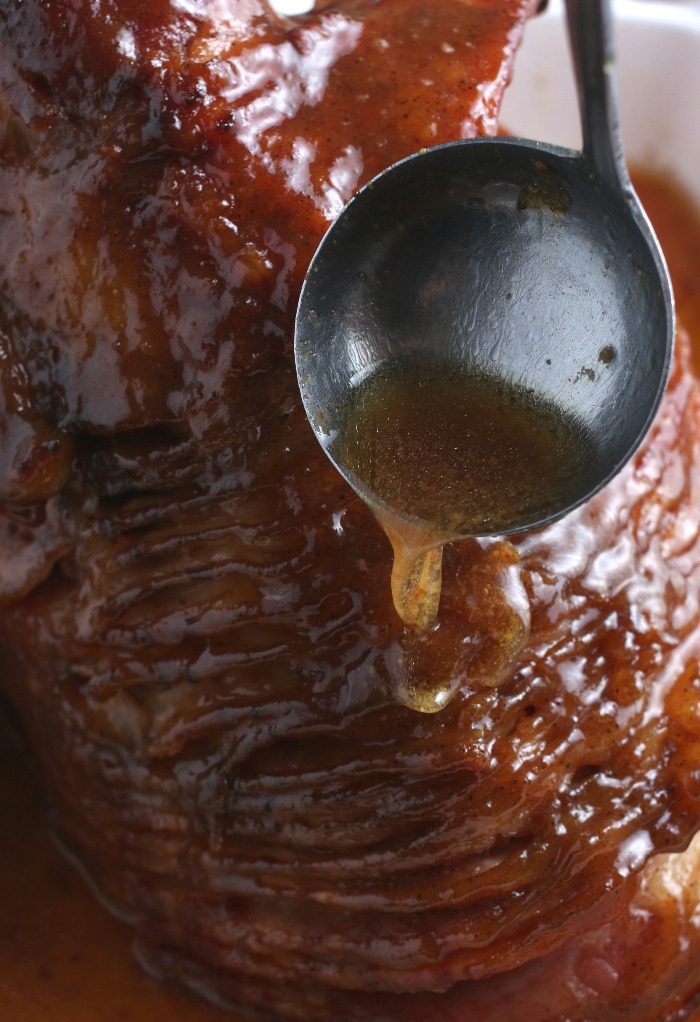
How Can I Make A Sugar Free Ham Glaze?
This recipe can easily be adapted for those following a low carb or Keto diet.
- Use a golden monk fruit sweetener like Lakanto Golden Raw Cane Sugar Replacement.
- Or use an erythritol sugar substitution like Swerve Brown.
- In addition, use sugar-free maple syrup
- The remaining ingredients will be the same
Can This Glaze Be Served On The Side?
Yes! If you would like extra glaze to have available then double the glaze recipe.
Divide the recipe in half. One part use as a glaze over the ham.
The second portion can be served as is with each individual portion of sliced ham.
For a thick glaze, in a small bowl mix together 1 tablespoon of corn starch with 1 tablespoon of water. Mix the corn starch into the remaining half portion of glaze in a saucepan over medium heat. Stir until desired thickness.
What is the Safe Internal Temperature for Ham?
The recommended safe temperature for a ham that has been cooked from its raw form according to the USDA is 145°F internally.
Follow the chart below for pre-cooked or raw ham.
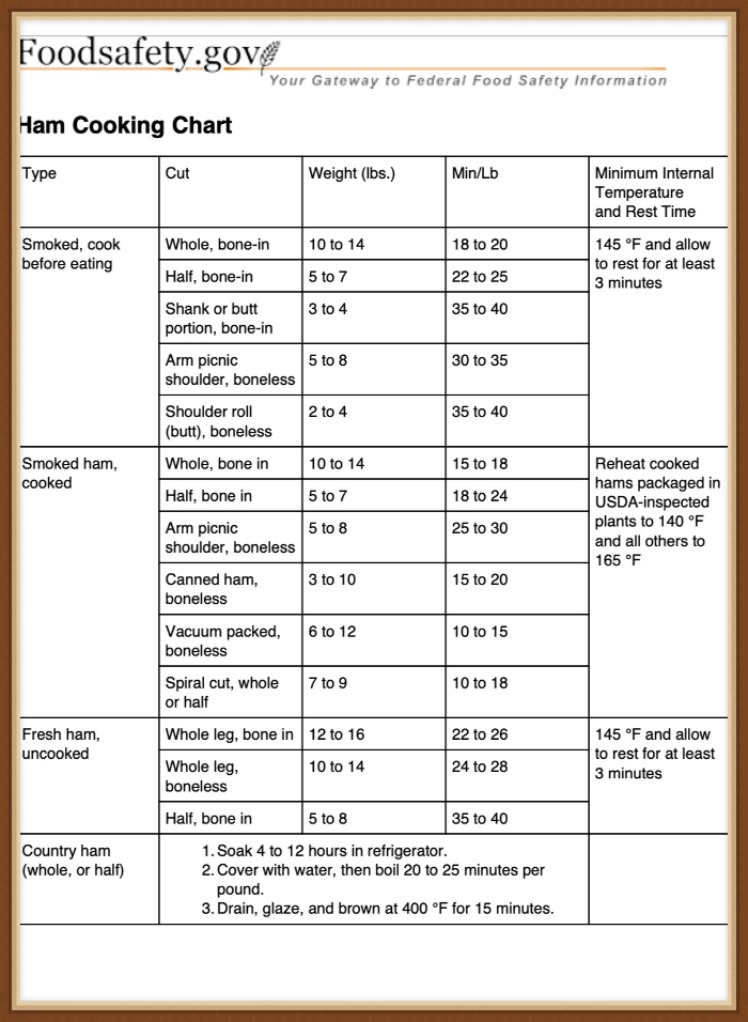
Source: FoodSafety.gov
Some say to cook to a slightly lower temperature, and then allow to rest for 30 minutes prior to slicing to allow the internal temperature to continue rising.
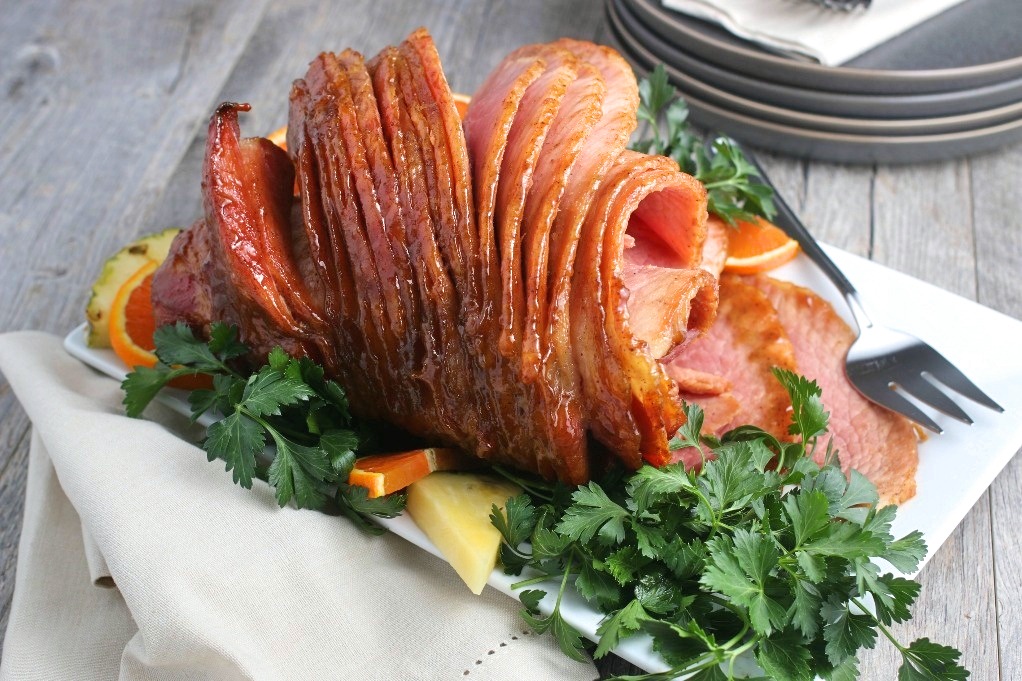
Great Recipes to Serve with a Glazed Ham
Alongside this ham, you’ll want to serve up some of the best sides we have. Below are a few of my favorites.
- Keto Green Bean Casserole
- Maple Glazed Brussels Sprouts
- Cheesy Mushroom Casserole
- Green Bean Potato Salad
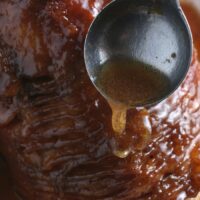
Ham Glaze Recipe
Ingredients
- 7-9 pound Ham
- 1/3 cup Real Maple Syrup or sugar free option
- 3 Tablespoons Cider Vinegar
- 1/4 cup Brown Sugar or sugar free option
- 3 Tablespoons Dijon Mustard
- 1/2 teaspoon Cinnamon ground
- 1/4 teaspoon cloves ground
Instructions
- Pre-heat oven to 325°F
- Remove ham from packaging. If there are any liquids, reserve add it and add to the roasting pan.
- Place the ham cut side down in a shallow roasting pan and for a spiral ham as shown and cook uncovered.
- Whisk cider vinegar, syrup, brown sugar, mustard and spices together in a small small saucepan.
- Over medium heat stir until the sugar has dissolved.
- When the internal temperature reaches 120°F spoon or brush the ham with the prepared glaze.
- Increase the heat to 350°F for the last 10 minutes of cooking. Watch to make sure the glaze doesn’t burn. Gently tent with foil and let rest for 10 minutes before serving. Ensure the internal temperature has reached 140°F before serving.
Notes
Nutrition
Disclaimer
Please note that the nutritional information provided are guidelines and may vary based on the brand of products used. For your specific nutritional goals use My Fitness Pal or Verywell Fit recipe calculators. All content within this site is not intended as medical diagnosis or treatment and should not be considered a substitute for professional medical expertise.
Pin To Your Dinner, Holiday, and Ham Recipe Boards
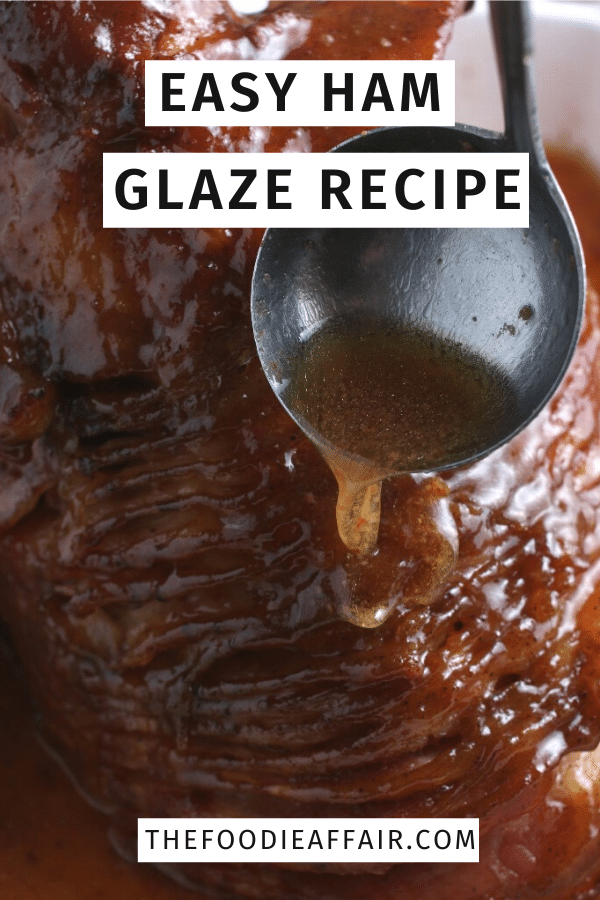


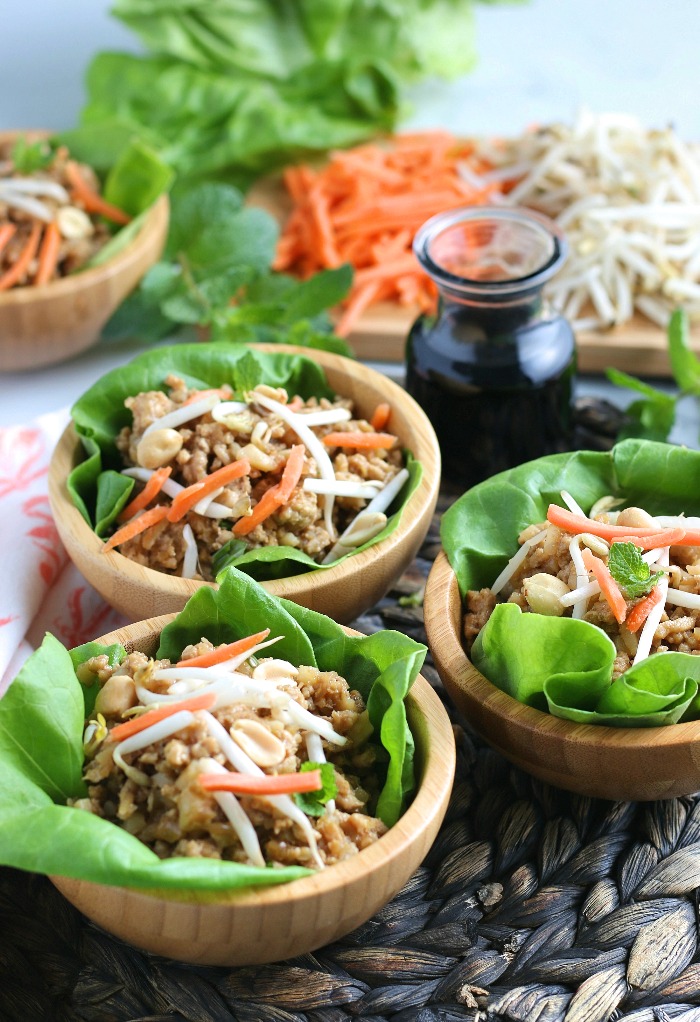
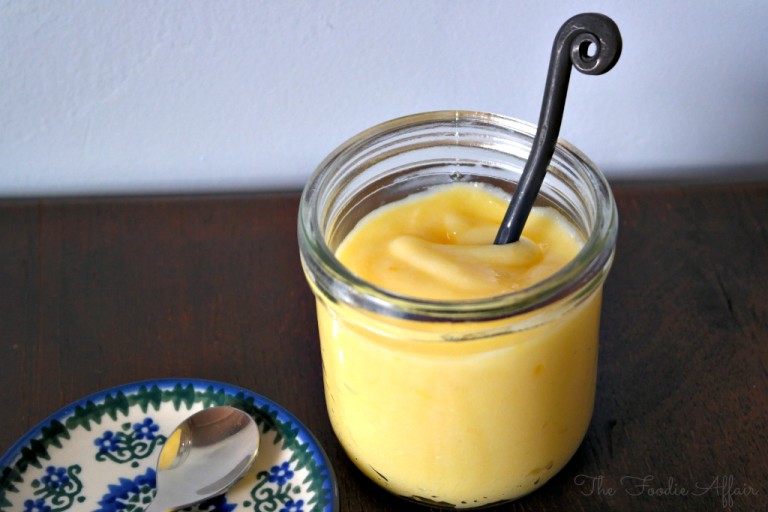
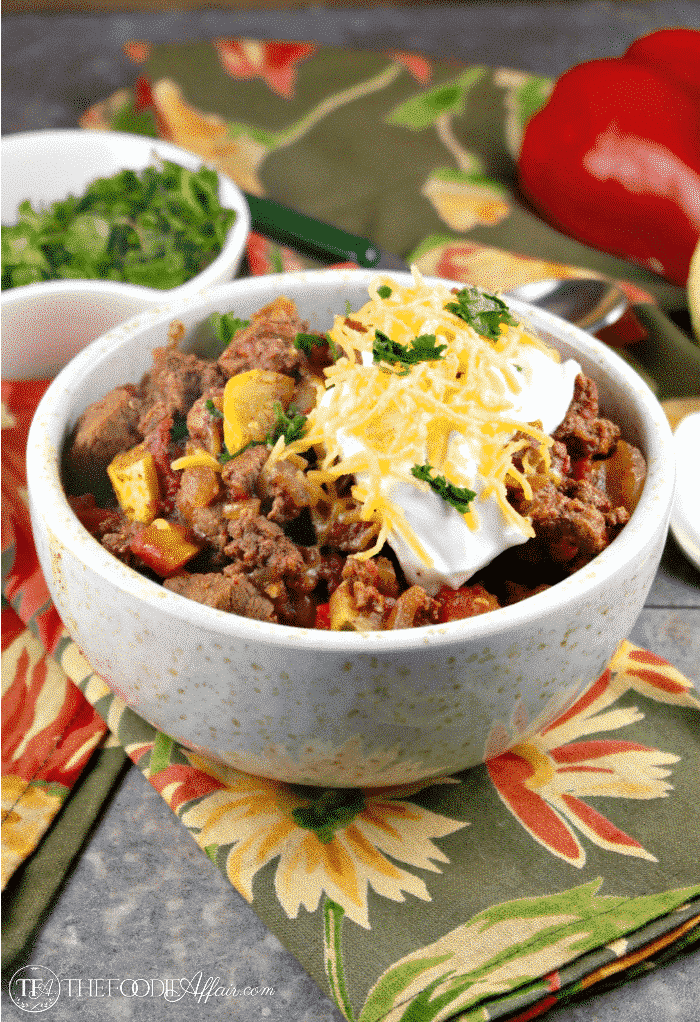
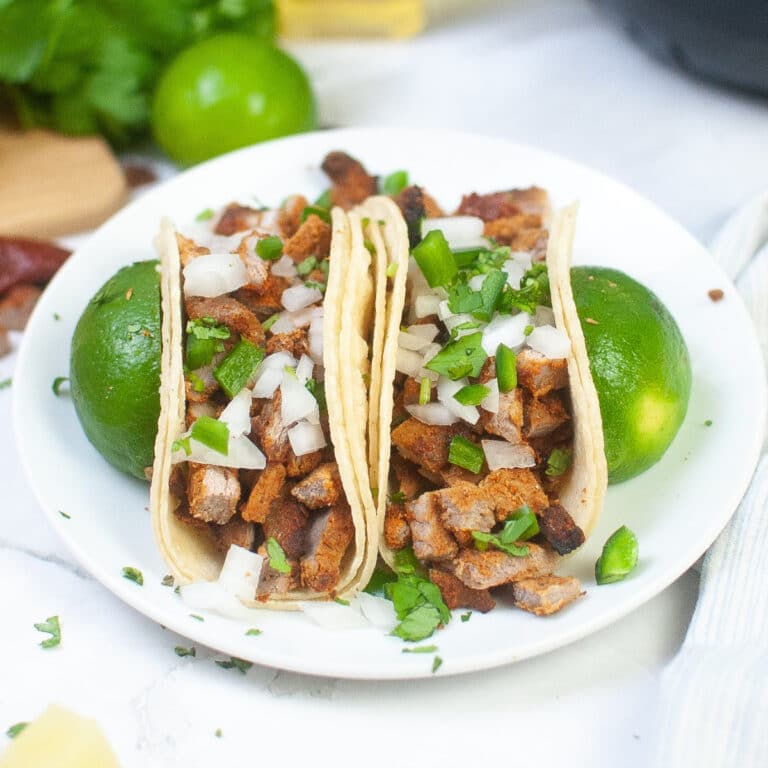
First time making a raw ham roast for this unusual Thanksgiving. It was VERY good!!! I always have good maple syrup on hand (never the artificial stuff). This is a keeper! Thank you! Your instructions were great!
Thank you, Joyce for letting me know this came out well for you! Appreciate that you took the time to stop by 🙂